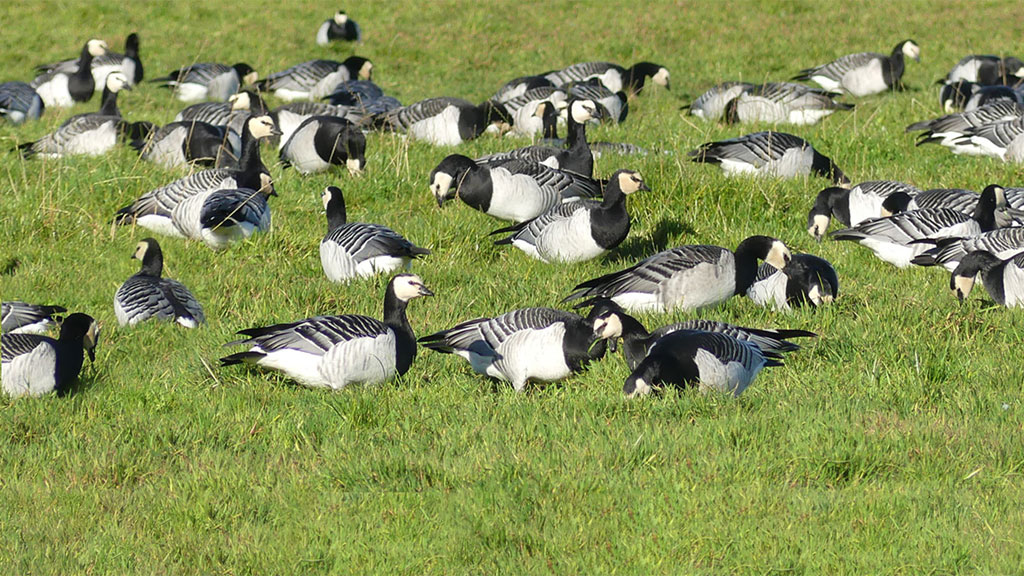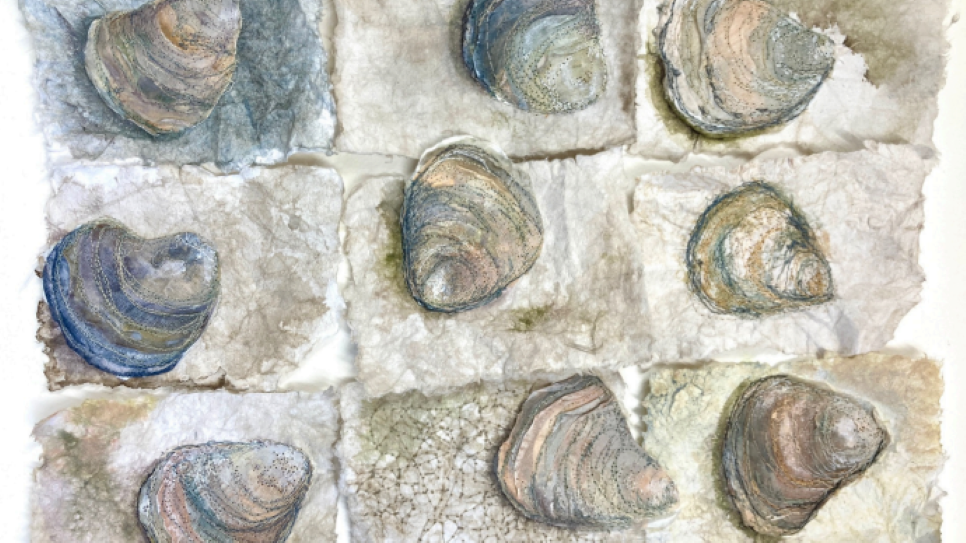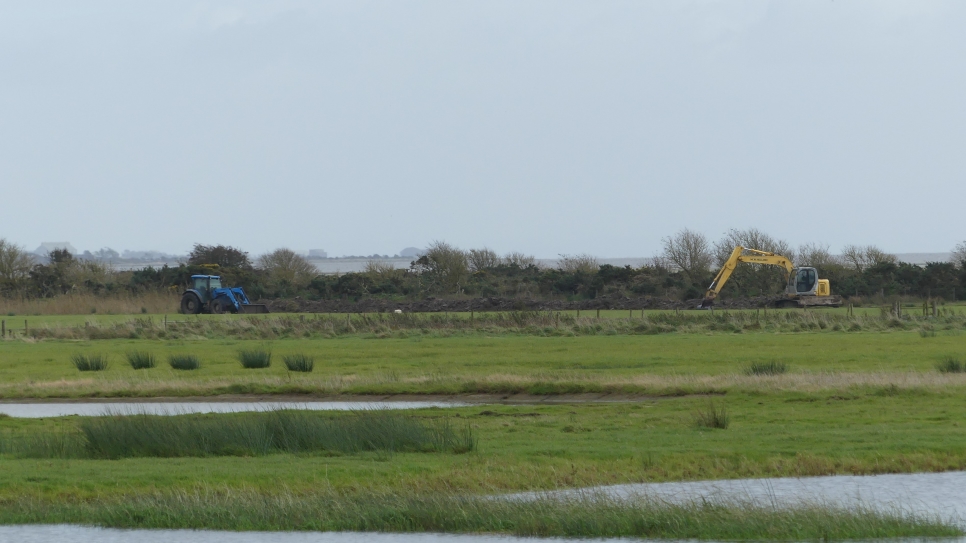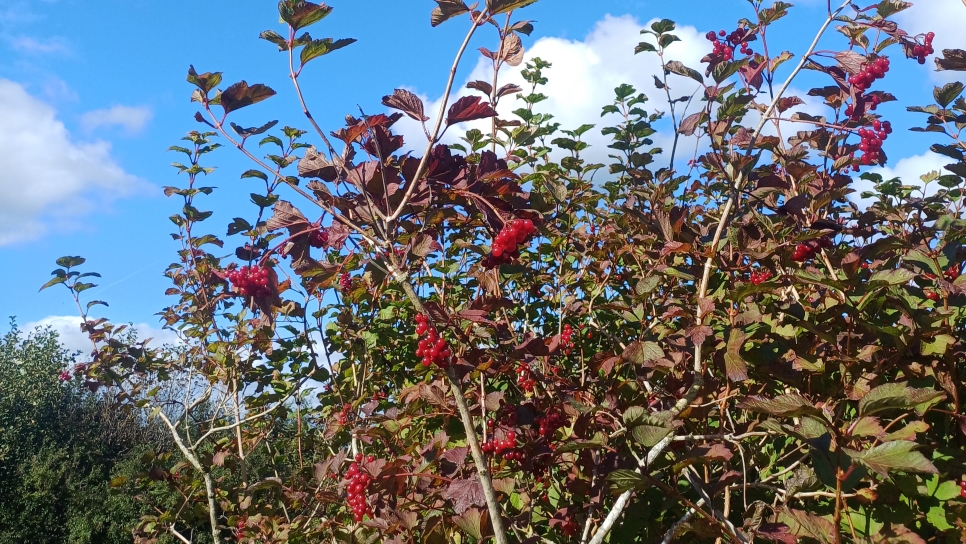Autumn sounds like geese
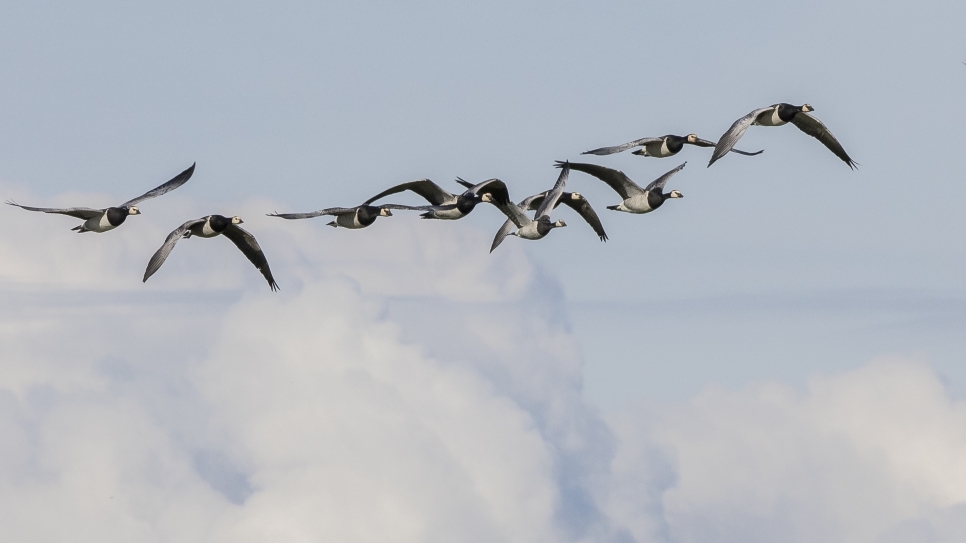
The first week of October.
No doubting it is definitely autumn now. Nights are drawing in, mornings are chill and misty. Nearly time to crack out the thermals (I said nearly!).
Here at WWT Caerlaverock, autumn looks like trees losing their leaves. It looks like muddy paths that never seem to dry out and call for wellies becoming part of everyday attire. It looks like grey skies and whipping winds.
But it sounds like geese.
First we get the Canadas. A classic honker. They arrive in early September before the others. The UK-based birds gather and arrive at Caerlaverock in ever-growing numbers.
Next, the greylags making a hoarse cackling. They hail from Iceland and most domestic geese are descended from them.
Thirdly the pinkies. Pink-footed geese tend to make higher pitched yelps. They come from Iceland too and move about a lot through the autumn and winter.
Finally the barnacles, barking and yapping. Unlike other geese, the barnacle geese don't fly in the classic V formation, preferring looser packs and long lines.
Even if you don't spot them right away, you will hear them. The autumn soundscape: geese.
Words by Marianne Nicholson
Feature image of barnacle geese flying by Alex Hillier
